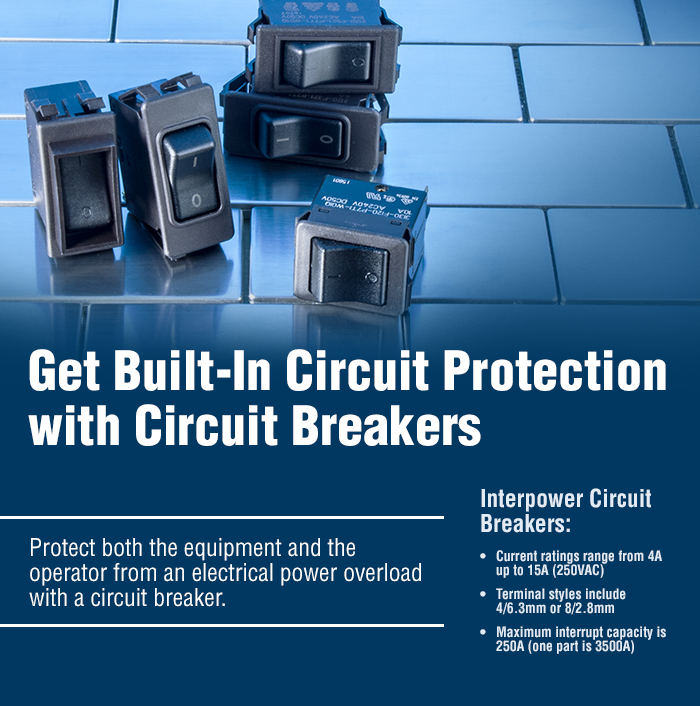Hello,
Built-in circuit protection is often a major design component in electrical and electronic equipment. The main purpose is to protect both the equipment and the equipment operator from an electrical power overload.
Circuit Protection
Many times this kind of protection is through a circuit breaker or through a fuse. A circuit breaker is a switch that stops the flow of electric current when it is overloaded. A fuse is a safety device that protects an electric circuit from excessive current.
In principle, a circuit breaker’s function is similar to that of a fuse—it can open the circuit pathway in the event of an overload or short circuit. A circuit breaker is available either as a manual or an automatic reset. A manual reset means a button has to be pressed or a lever has to be moved in order to reset the circuit pathway. An automatic reset will start functioning again, once normal conditions resume. The circuit breaker is reusable, while the fuse is not.
When the current is larger than the circuit breaker is designed to handle, the switch contacts open, breaking the current. This occurrence is commonly referred to as being “tripped.” After the issue is resolved (whatever “tripped” the circuit is repaired), then the circuit breaker can be reset by pressing the button or flipping the switch. The contacts stay closed until another overcurrent fault condition occurs, causing it to trip again. While a circuit breaker is usually designed to trip faster than a fuse, a circuit breaker is typically larger and more expensive.
Features of a Circuit Breaker
It is important to note that circuit breakers only protect against low-level faults and are not meant to clear faults with high-voltage levels. A circuit breaker is not a surge resistor for catastrophic events, such as lightning strikes or high-voltage line shorts.
Reset and Reuse
A circuit breaker can be reset after it has tripped. While it may take longer for a circuit breaker to trip when exposed to moderate overloads, at high overloads it tends to trip more quickly. When tripped, it provides a definite indication that it needs to be reset.
The design of the circuit breaker allows for repeated use. It can be used many times before needing to be replaced. Factors which may affect its life span include arc strength, setting time, and frequency of resetting.
Temperatures, Sizes, and Ratings
Ambient temperatures do not affect some types of circuit breakers as much as some supplementary fuses may be affected.
Compared to a supplementary fuse, a circuit break is larger in size and takes up more panel and internal space. If it does become disabled, a technician may be needed to replace it.
The ratings are in larger increments for a circuit breaker. Many are not available with the minute adjustment levels that certain fuses have. For example, a fuse can be in milliamps, while a circuit breaker is in even or half increments.
Cost Savings
Initially, a circuit breaker may be more costly than a fuse. The potential savings comes with the reduction in replacing components.
Additional Resources
For more information on the complete line of circuit breakers offered by Interpower, see Circuit Breakers and the Featured Product page.
Interpower has same day shipping on in-stock products and a 1-week U.S. manufacturing lead-time on non-stock Interpower products. Value-added services are available. If you have questions, Interpower offers free technical support. You can check the website at www.interpower.com, e-mail sales@interpower.com (United States) or uk@interpower.com (United Kingdom) or contact Customer Service in the United States at (800) 662-2290 or in the United Kingdom at +44 (0)1908 295300.
